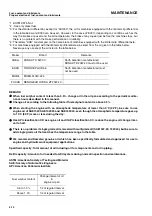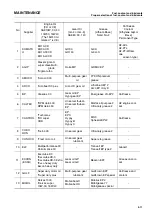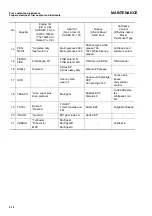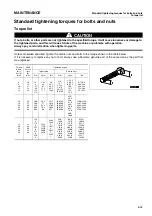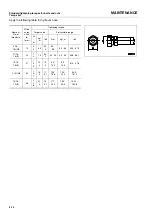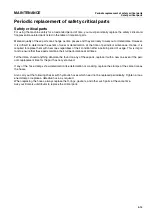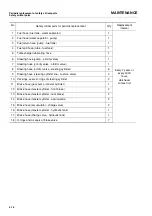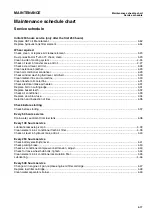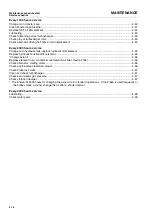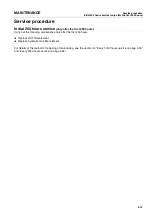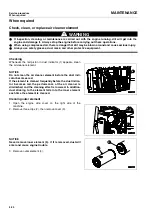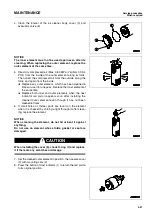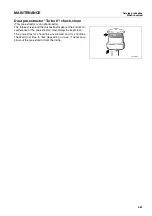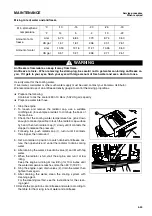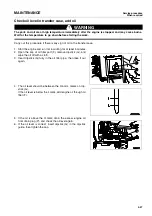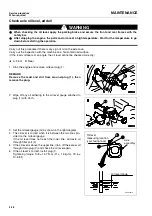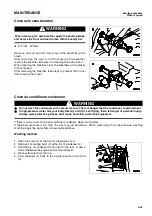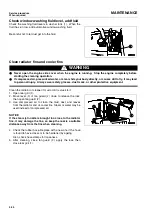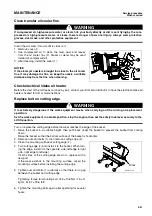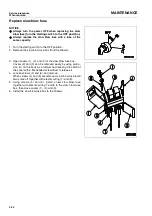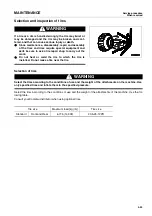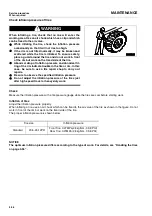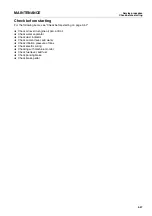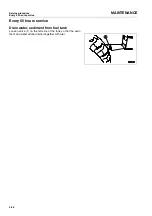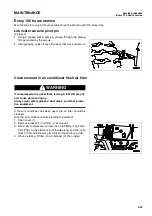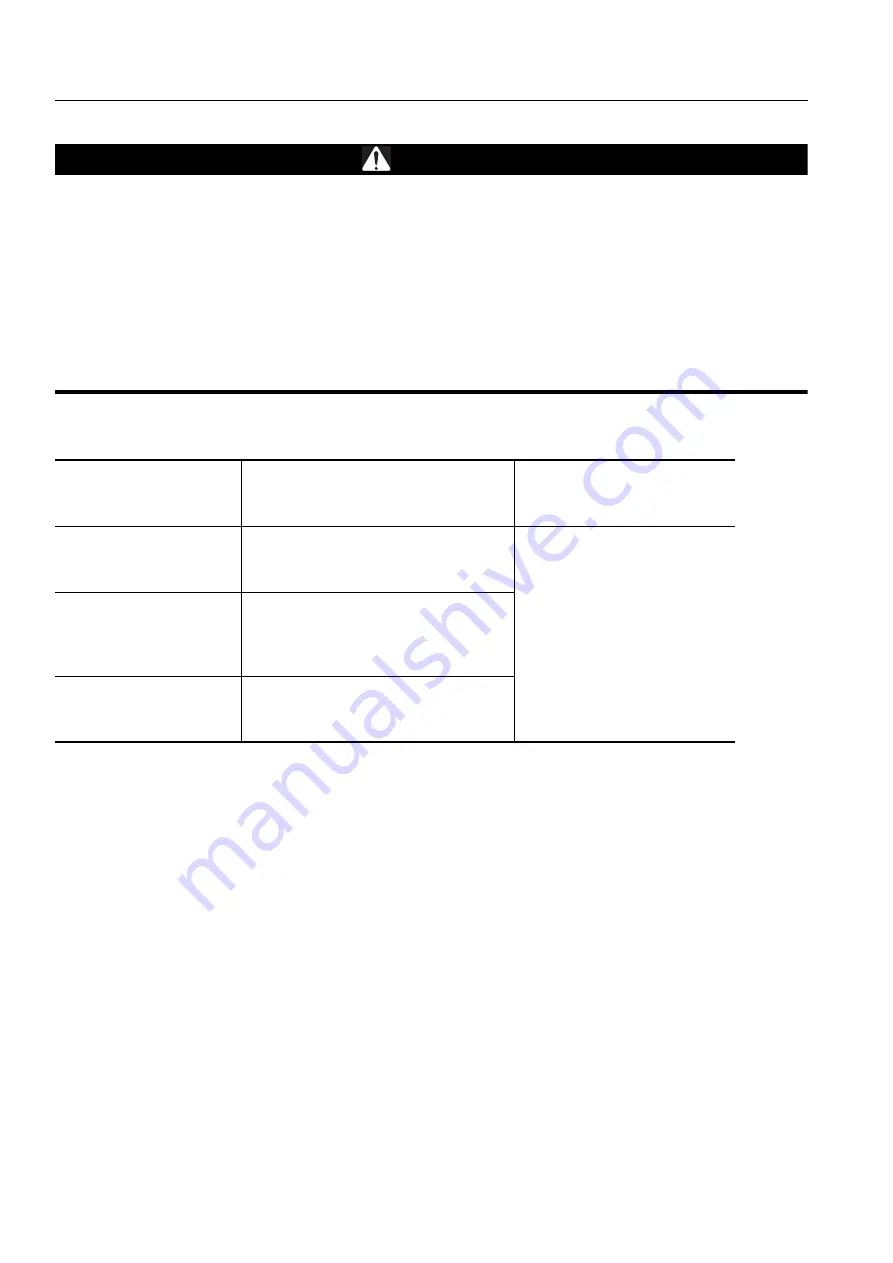
Service procedure
MAINTENANCE
When required
4-24
Clean inside of cooling system
0.
WARNING
Immediately after the engine is stopped, the engine coolant is hot and the pressure inside the radia-
tor is high. Removing the cap and draining the water under this condition could cause burns. Allow
the engine to cool down, then turn the cap slowly to release the pressure. To top up coolant in the
radiator, use a suitable climbing aid (for example a ladder) to climb up the back of the machine. Slowly
loosen the sealing cap to let off the pressure.
Start the engine and flush the system. When standing up or leaving the operator's seat, set the safety
lock lever to the LOCK position.
For details of starting the engine, see “Check before starting engine, adjust on page 3-54“ and “Start-
ing engine on page 3-68“ in the OPERATION section of the Operation and Maintenance Manual.
When the undercover is removed, there is danger of touching the fan.
Never go to the rear of the machine when the engine is running.
Clean the inside of the cooling system, change the coolant and replace the corrosion resistor according to the
table below.
Stop the machine on level ground when cleaning or changing the coolant.
Use a permanent type of antifreeze.
If, for some reason, it is impossible to use permanent type antifreeze, use an antifreeze containing ethylene glycol.
Super Coolant (AF-ACL) has an anti-corrosion effect as well as an antifreeze effect.
The ratio of antifreeze to water depends on the ambient temperature, but to obtain the corrosion resistance effect,
a minimum ratio of 30% by volume is necessary.
In areas where the water is hard, always add Komatsu genuine corrosion resistor agent KI. One packet of corro-
sion resistor agent (No. 600-411-1120) contains 100g (0.22 lb). The standard density of the mixture should be 7g/
liter (0.065 oz/US gal).
When deciding the ratio of antifreeze to water, check the lowest temperature in the past, and decide from the mix-
ing rate table given below.
It is actually better to estimate a temperature about 10°C (50°F) lower when deciding the mixing rate.
Kind of coolant
Cleaning inside of
cooling system and
changing coolant
Adding corrosion
resistor agent KI
Permanent type anti-
freeze
(All season type)
Every year (autumn) or
every 2000 hours
whichever comes first
Every 1000 hours and
when cleaning the inside
of the cooling system and
when changing coolant.
Non-permanent type
antifreeze containing
ethylene glycol (winter,
one season type)
Every 6 months (spring
and autumn)
(Drain antifreeze in spring,
add antifreeze in autumn)
When not using anti-
freeze
Every 6 months or every
1000 hours whichever
comes first
Summary of Contents for WA250PT-5H
Page 2: ......
Page 3: ...FOREWORD 11...
Page 16: ...Contents FOREWORD 1 14...
Page 24: ...SAFETY 2 2...
Page 58: ...Precautions with tires SAFETY Precautions when storing tires 2 36...
Page 60: ...OPERATION 3 2...
Page 233: ...TECHNICAL DATA 45...
Page 235: ...TECHNICAL DATA Technical data 5 3...
Page 250: ...Central lubrication system ATTACHMENTS OPTIONS 6 14...
Page 251: ...INDEX 67...
Page 252: ...INDEX 7 2...
Page 255: ...Index 7 5...

